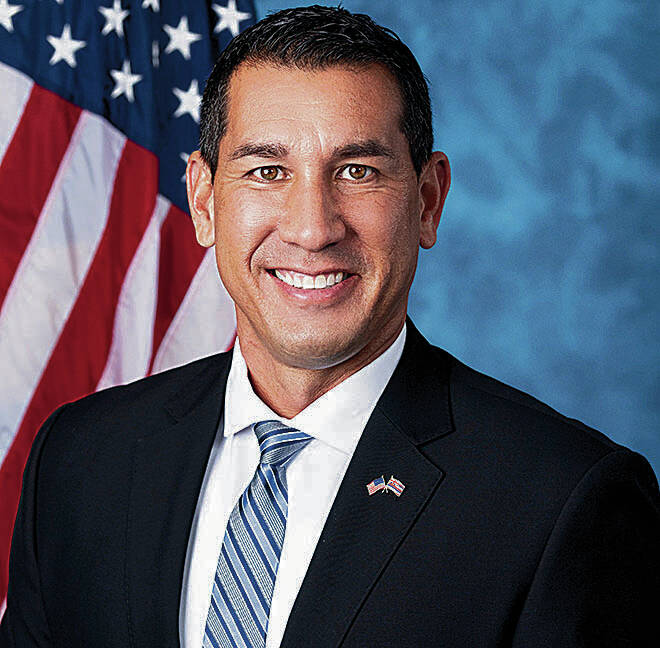President Teddy Roosevelt once said: “In any moment of decision, the best thing you can do is the right thing, the next best thing you can do is the wrong thing, and the worst thing you can do is nothing.” As our state begins its third year living under the enormous strain of a deadly health pandemic, there are no signs of abatement. After record daily cases and a health care, educational and local workforce system struggling to deal with the exhaustion of the coronavirus, it is clear to me that we have squandered the opportunity to prepare the state for a “new normal” life with COVID-19.
Not too long ago Hawaii appeared to have management of the coronavirus under control. We were one of the best performing states in the nation and with the infusion of almost $3 billion in federal funds and latitude to shape our island strategy to deal with the pandemic, we had an opportunity very few states have due to our unique geography and isolation in the Pacific.
However, indecisiveness, lack of a statewide strategic plan and failure to have the foresight to prepare for a resurgence of the virus and deadly variants have cost us all greatly. Decisions to relax entry requirements, abandonment of robust testing, failure to procure an abundant supply of proper masks, and inadequate planning for our public schools have led us into the current crisis.
The rampant surge of the omicron variant has proved COVID-19 is not going away any time soon. We must implement immediate solutions as well as prepare contingency plans for future mutations of the coronavirus and other novel viruses, otherwise we will be in a perpetual state of emergency. Failure to immediately implement an enduring, multiyear statewide plan will result in more residents experiencing infection and mortality. Health inequities will widen especially in our Native Hawaiian and Pacific Islander communities and billions will be lost from our state’s economy.
Here are 10 points that must be done immediately statewide:
First, the state needs to modify its entry requirements for all transpacific, international and cruise ship passengers to require a pre-entry test and a post-arrival test regardless of vaccination status.
Second, the definition “fully vaccinated” needs to change to require an additional vaccine dose or “booster,” if eligible, and this requirement must be in place for all indoor events, to include indoor dining.
Third, the state needs to require and provide high-quality masks, like N95 or KN95 masks, or at the very least, single-use medical-grade masks to prevent community spread. Cloth masks should not be allowed unless over a high-quality mask. This policy should be mandatory in all schools and clean, high-quality masks should be provided for free by the state daily.
Fourth, the state needs to invest in a digital, secure health passport that will allow each individual to have an electronic vaccination certificate as well as report and track testing status in real time. Three years into this pandemic, we have failed to take advantage of existing technology to do so, and instead continue to rely exclusively on paper vaccination records, which can be forged.
Fifth, the AlohaSafe Alert needs to be updated in order to be more effective. Residents need the ability to confidently rely on the state reporting system to provide them accurate notice of close contact in real time.
Sixth, in order to keep schools open, the state must implement a testing strategy in all public schools that first and foremost keeps our teachers and students safe. We also need to provide every classroom in the state the necessary ventilation upgrades and air filtration systems to improve air quality, mitigating the risk of airborne spread.
Seventh, if we are ever to achieve herd immunity, state, county, health care and community leaders must continue to provide a strong, unified message and robust education about vaccination effectiveness and availability for all eligible residents with the goal of fully vaccinating (including booster shots) 80% of the eligible population by the summer. In order to accomplish this, the state must work with the business community and private sector to provide paid sick leave and time off so residents can plan for when to get vaccinated or boosted.
Eighth, in the event that someone does test positive, the state must provide clear public health isolation guidance and require two negative antigen tests commencing on the fifth day of isolation, spaced two days apart to allow isolation to end and return to normal life. These tests should be secured by the state and given to each resident when they test positive to help people come out of isolation.
Ninth, the state must procure the resources needed to respond to the next variant. The state must ensure that all our families have free access to at-home, rapid tests and that there is an adequate supply to meet our needs. Every family should be ordering tests from www.covidtests.gov Opens in a new tab, but our state still needs its own strategic stockpile ready to serve our residents’ needs.
Tenth, the state must work with county officials to increase the number of quarantine facilities across the state. Many of our residents are sharing crowded apartments or living with multiple generations under one roof where isolation at home is not possible. We must provide these facilities to reduce the chance of spread and keep our residents safe.
These 10 steps are absolutely critical in building resilience that allows residents and visitors to be safe. We must strengthen our hospitals, health care systems and public health institutions. We need to stop burning out our health care workers and instead give them the resources they need to do their jobs effectively.
People are scared. People are demoralized. People are frustrated. It cannot and must not stay this way. I implore my former colleagues in the state Legislature to act decisively. We need to do better.
Kai Kahele represents Hawaii’s 2nd Congressional District (rural Oahu-neighbor islands) in the U.S. House.

